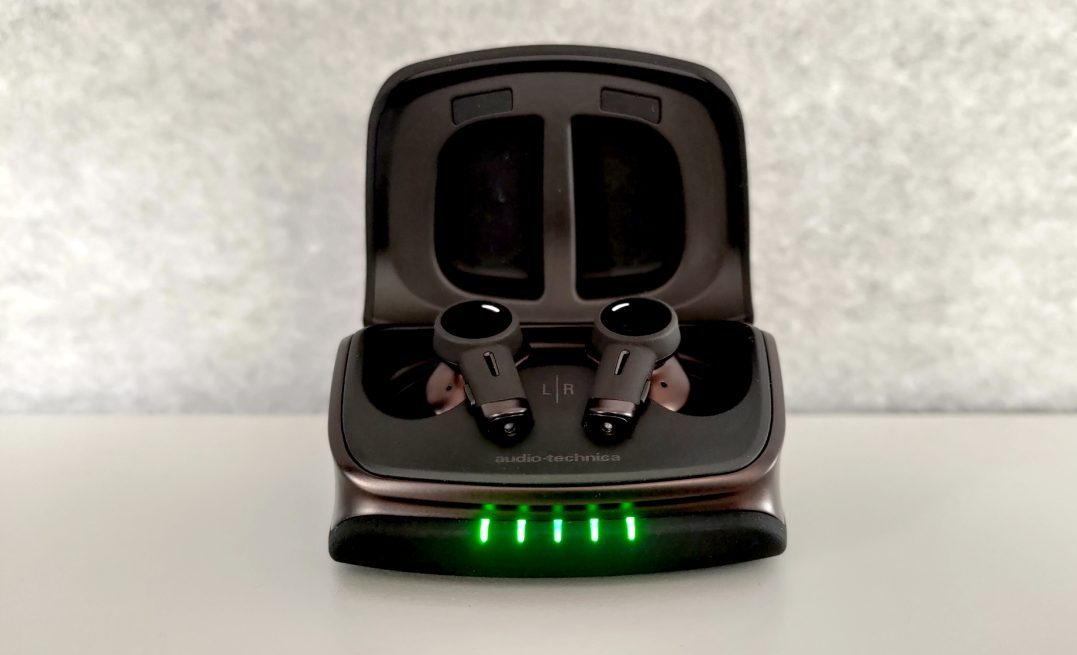TL;DR
Audio-Technica's ATH-TWX9 earbuds impress with a stunning, premium design and unique features like UV sterilization and highly customizable controls. After initial software hiccups, these issues have been resolved, offering a polished experience with excellent noise cancellation and a vast array of ear tip options for a perfect fit. While the soundstage is good, it's slightly held back by smaller drivers, meaning they don't quite reach the absolute pinnacle of audio immersion compared to some competitors. Despite this, the innovation and design make them a compelling choice for those who value both style and substance. Discover if their advanced features justify the premium price – read on for the full breakdown!
In today’s competitive True Wireless market, specialization is key for suppliers seeking to differentiate themselves. We’ve observed innovations ranging from personalized hearing tests for sound optimization and intricately designed cases that convey information, to integrated heart rate monitors, inclinometers, extensive customization options, and even methods for assessing earbud density.
The Audio Technica ATH-TWX9 embraces this trend of specialized features. It introduces innovations that deserve wider adoption among manufacturers, alongside unique functionalities we haven’t encountered previously. Recognizing that no single manufacturer can conceive of everything, we offer our insights and suggestions to Audio Technica. With strategic refinements, these headphones could achieve a performance as impressive as their visually striking design.
Our evaluation of the ATH-TWX9 began earlier this year, but initial testing revealed significant latency issues, approaching a full second, coupled with an overly complex menu system that promised more control than it delivered. While the soundstage showed early promise, these shortcomings resulted in a low initial rating. However, drawing parallels to Sennheiser’s trajectory with the Momentum True Wireless 2, we anticipated that Audio Technica would address these issues through subsequent updates and improvements. Consequently, we postponed our final assessment to allow for these potential enhancements.
We’re pleased to report that our expectations were met.
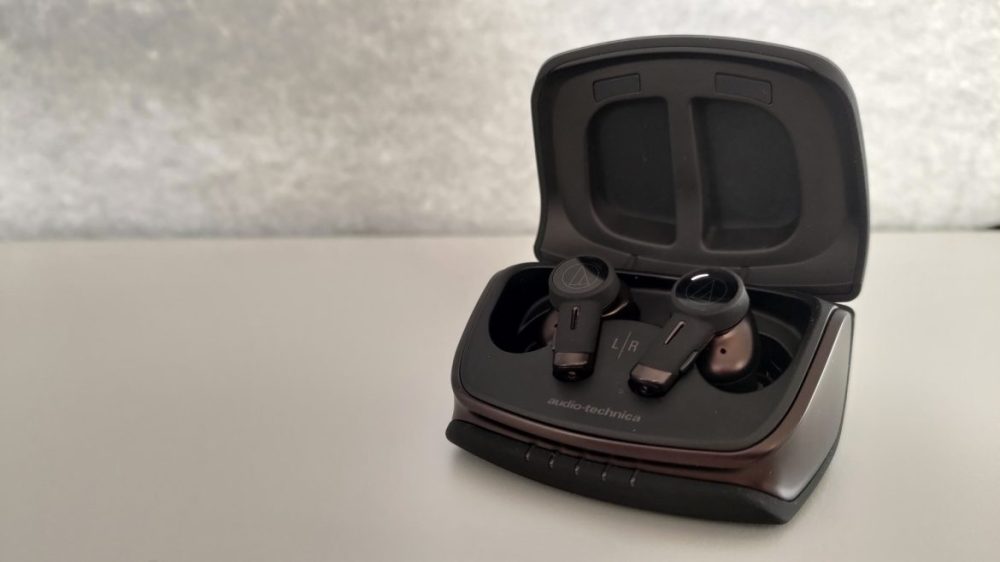
The overall ATH-TWX9
The Audio Technica ATH-TWX9 boasts an exceptional aesthetic design. It is rare for headphones to achieve a design that is both distinctive and indicative of high quality. This extends beyond mere appearance, encompassing the tactile experience, the secure closure of the lid, and the satisfying click as the earbuds seat within the case. LEDs on the case use color-coded signals to indicate status (blue for the headphones, white for the case, and purple for UV cleaning), while subtle LEDs on the headphones themselves provide similar signals. However, even at low intensity, these can create a noticeable glow in dark environments, a feature that may not be universally desired.
Regarding controls, the ATH-TWX9 incorporates both touch and physical buttons. A key strength lies in the extensive customization options for both, supporting single, double, triple, and long-press actions (though long-press is not available for the physical button). This flexibility is particularly valuable, allowing users to disable touch controls to prevent unintended inputs while retaining full control via the physical buttons. This is a well-considered design choice.
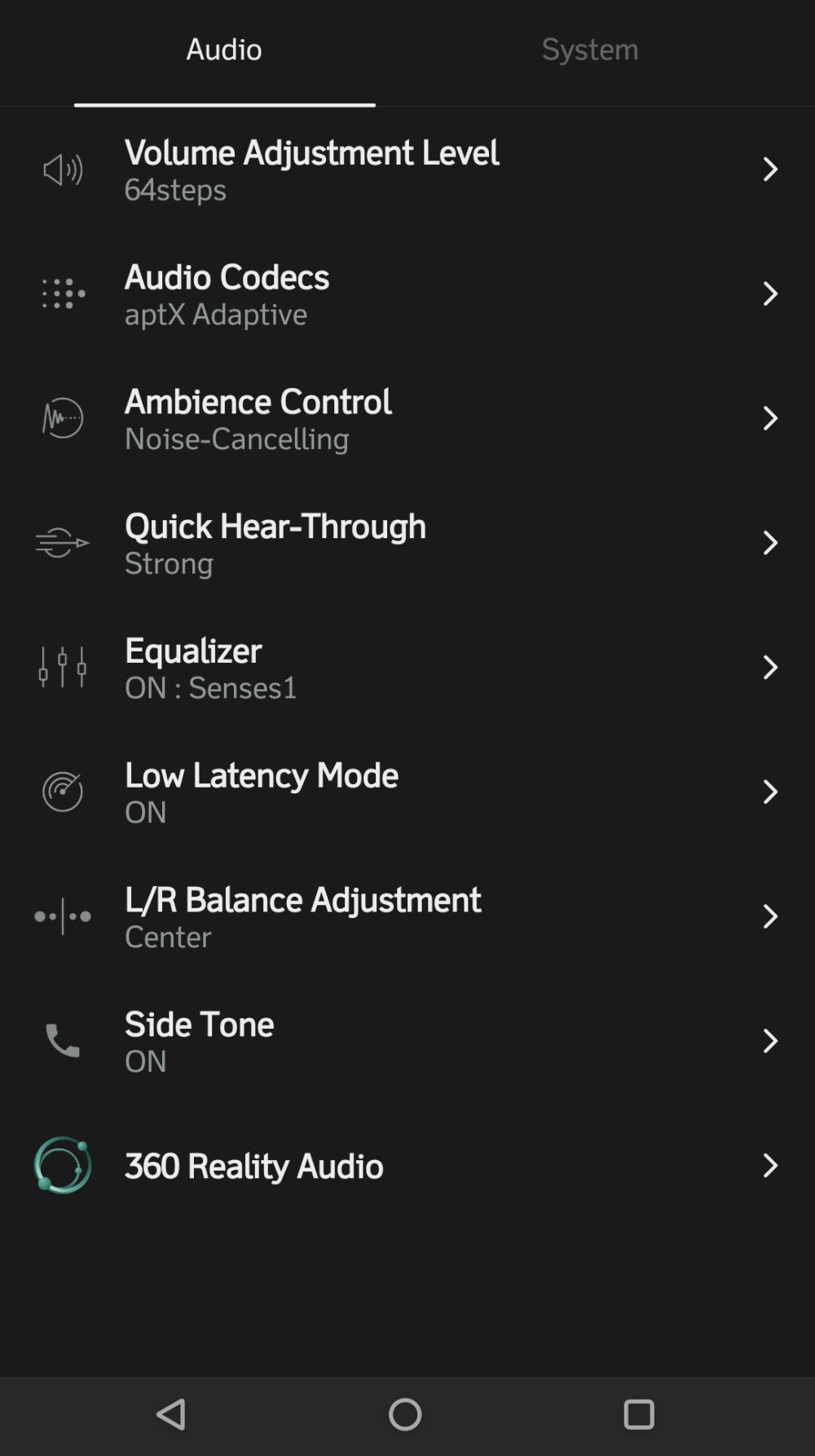

The Audio Technica Connect app has significantly improved in terms of organization. It enables users to select their preferred codec; the aptX Adaptive codec, which initially presented challenges during our Android-based testing, now functions flawlessly. Furthermore, the app offers EQ settings, sound profiles, adjustable ambient sound passthrough, and a range of specialized noise cancellation profiles tailored to specific environments (train, plane, on the go, etc.). Notably, the Optimized mode performs a rapid analysis of the surrounding environment to optimize noise cancellation within approximately 20 seconds, and this mode yielded the most effective noise reduction in our testing.
Beyond wireless charging, 360 Reality Audio, and multipoint connectivity, the ATH-TWX9 introduces a novel feature: adjustable volume control sensitivity. This allows users to fine-tune the volume adjustment steps, which can be particularly useful for those seeking precise volume control, such as for bedtime listening. Users can select between 16, 32, or 64 steps. We observed that the 64-step setting may not function consistently when controlling volume from the connected device, resulting in two-step jumps per press, effectively mirroring the 32-step setting. However, when controlled directly from the headphones, the 64-step adjustment functions as expected. We appreciate the inclusion of this feature.
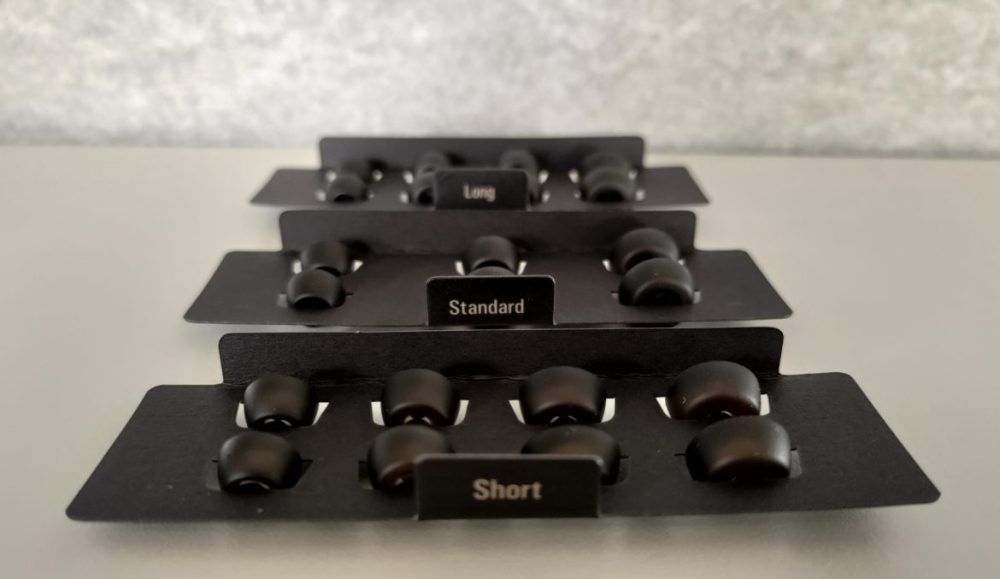
Let’s talk earbud options
The ATH-TWX9 offers an exceptional range of ear tip options. Audio Technica provides not only multiple sizes (XS to L) but also three distinct depths, allowing users to adjust how far the earbud extends into the ear canal.

While the Anker Soundcore Liberty 4 offered some similar options, the ATH-TWX9 provides a significantly greater degree of customization. This is a welcome feature for users who experience discomfort with standard in-ear designs. The diverse options will result in noticeable differences in fit and comfort, making experimentation worthwhile.
Let’s talk hygiene
A defining feature of the ATH-TWX9 is its integrated UV light disinfection system, which activates whenever the headphones are stored in the case. This system aims to reduce the risk of ear infections by eliminating bacteria on the earbuds, indicated by a purple LED on the case.
The efficacy of this system is difficult to verify. However, the concept is appealing, providing a sense of enhanced hygiene.
One potential drawback is the lack of a manual override for the UV disinfection. Because the headphones are automatically exposed to UV light during charging, the case battery drains more quickly. An option to disable this feature when battery conservation is prioritized would be beneficial. Currently, the only workaround is to avoid storing the headphones in the case for short periods or refraining from opening the lid, as this also initiates the disinfection cycle.
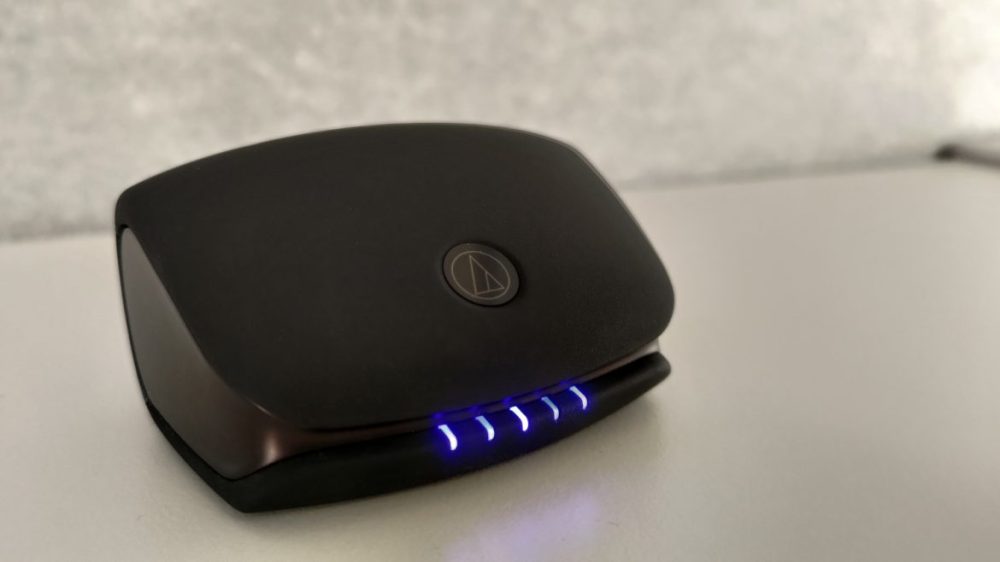
Let’s talk soundstage and acoustics
The initial impression is that the soundstage is subtly lacking in some regard. Defining this deficiency is challenging, as comparisons with leading models like the Technics EAH-AZ80 and Sony WF-1000XM4 reveal only minor differences. The treble response is slightly subdued, and the midrange lacks a degree of immersion. However, the performance remains competitive. Through repeated comparisons with noise cancellation enabled and disabled (which has minimal impact on the soundstage) and various headphone pairings, a subtle difference emerges.
Further examination of the technical specifications reveals that the ATH-TWX9 utilizes a remarkably small 5.8 mm driver diameter. This is 0.2 mm smaller than that of the Sony WF-1000XM4 and a full 4.2 mm smaller than the Technics EAH-AZ80. This finding clarifies the nature of the subtle difference in soundstage. The limiting factor is the acoustic capability inherent in the smaller driver size. However, the soundstage achieved despite this limitation is impressive.
In summary, the ATH-TWX9 delivers a powerful and precise soundstage, though the midrange is slightly less pronounced, and the overall acoustic presence lacks complete immersion. Nevertheless, the ATH-TWX9 is versatile across various genres, though it may not provide the most captivating listening experience. The integrated EQ can compensate for perceived deficiencies, but it cannot fully replicate the spaciousness of larger-driver competitors.
One cannot help but speculate on the potential performance of these headphones with an 8 mm driver. Perhaps this will be a feature of a future iteration.
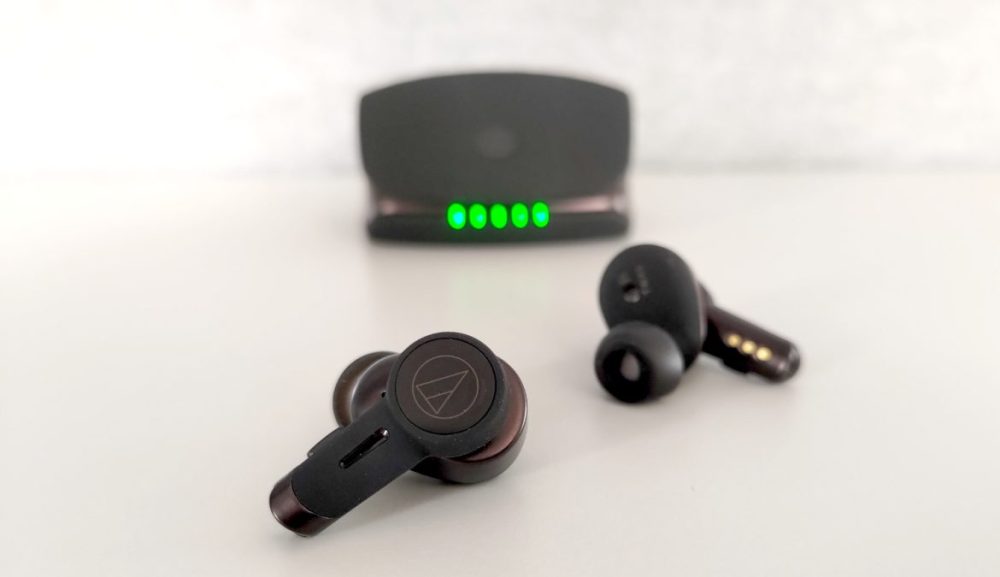
Conclusion – Audio Technica ATH-TWX9
The Audio Technica ATH-TWX9 headphones are technologically sophisticated, possess a notably elegant design, and deliver a soundstage that approaches top-tier performance. The initial issues have been resolved, and all features now function reliably. The thoughtful design details, such as the variety of ear tip options, UV cleaning, and combination of touch and physical controls, reflect Audio Technica’s commitment to innovation. Similar to the ATH-R70X, the ATH-TWX9 incorporates innovative features and a user-centric design philosophy that anticipates user needs.
Regarding the price of SEK 3,800, the advanced technology and innovative features justify the cost. However, at this price point, expectations for soundstage performance are high, and while the small drivers are impressive, the soundstage does fall slightly short of perfection. We also believe that the price is influenced by the UV cleaning feature, which, while offering a sense of reassurance, may not be essential for all users. We experience a similar sentiment as with the Denon PerL Pro 665, where a portion of the cost stems from features beyond the headphones’ core audio capabilities.
Consequently, the Audio Technica ATH-TWX9 does not achieve a perfect score. However, if there were a rating category for aesthetic design, it would undoubtedly excel.
Audio Technica provided review samples for this evaluation. The provision of review units does not influence our editorial objectivity. Our reviews are conducted independently, with a focus on providing informative and unbiased assessments for our readers and consumers.
